The research community was first made aware of this eye-catching illusion by Spillmann, Heitger, and Schuller in 1986. Graphic artist H. Ouchi designed the illusion consisting of two orthogonally oriented black-and-white rectangular checkerboard patterns that form a backdrop orientation around an inner ring.
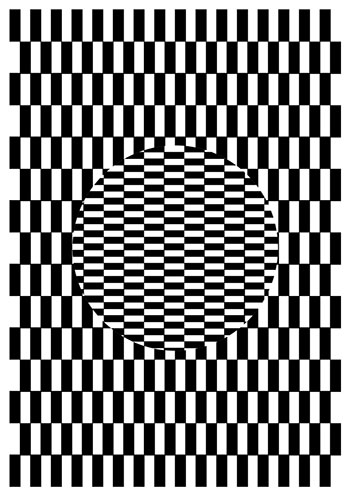
Figure 6.4.a
Source: Reshma Issac
According to Kitaoka and Ashida (2003), two factors affect the strength of the illusion. The first is the stepwise luminance, where the smoother the luminance profile, the weaker the illusion. The Ouchi illusion mainly works due to the stark contrast between the white and the black tiles. Second, the researchers suggest that curved or fragmented edges enhance the illusion, where they say the more extended the edge is, the weaker an illusion would be. As we can see in the Ouchi illusion, there are hardly any long edges; it consists of small, disjointed rectangles.
The rectangles inside the circular region are oriented at a right angle to those in the rest of the figure. This creates an impression of relative motion when the whole pattern is moved.
At the level of phenomenal everyday experience, two simultaneous events appear when we look at the Ouchi Illusion. First, there is a ‘decoupling’ effect of the circular checkered region in the centre from the checkered background. Further, the circular disk appears to float atop the background.
Second, the rectangles in the circle become jittery when the whole image is moved.
These phenomena can be comprehended separately and used together to explore the Ouchi illusion in greater detail visually.
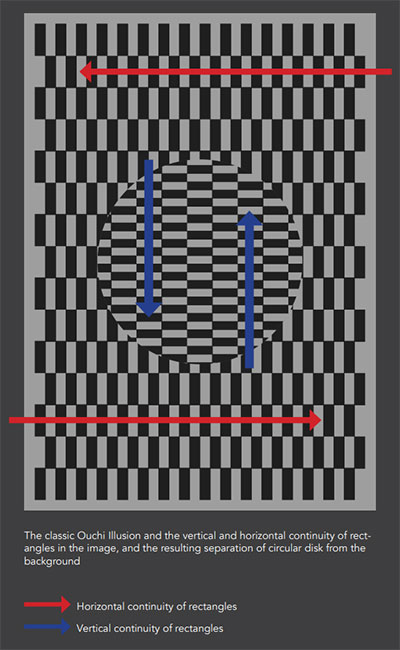
Figure 6.4.b
Source: Reshma Issac
Further, the relative motion of the rectangles at the centre circle may also be caused by the excitation of spatially overlapping ON and OFF regions of the centre-surround receptive fields. Small retinal movements show the segmentation of the embedded pattern and motion of the inset in relation to the surrounding. A multitude of perspective distances and angles result in the illusion (Shapiro & Todorović, 2017).
Here are some of the explorations when the relative motion and the sense of decoupling are manipulated.

Figure 6.4.c
Source: Reshma Issac

Figure 6.4.d
Source: Reshma Issac

Figure 6.4.e
Source: Reshma Issac

Figure 6.4.f
Source: Reshma Issac
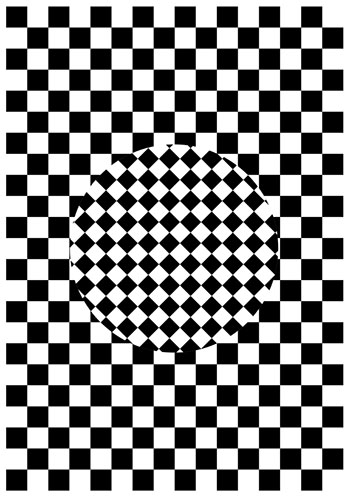
Figure 6.4.g
Source: Reshma Issac
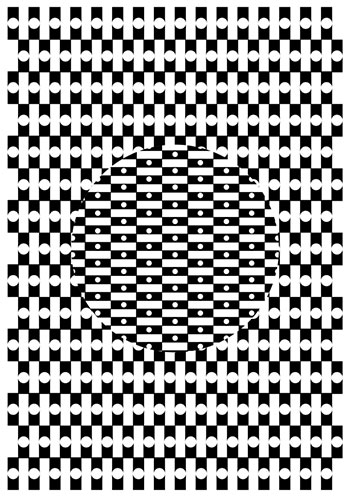
Figure 6.4.h
Source: Reshma Issac
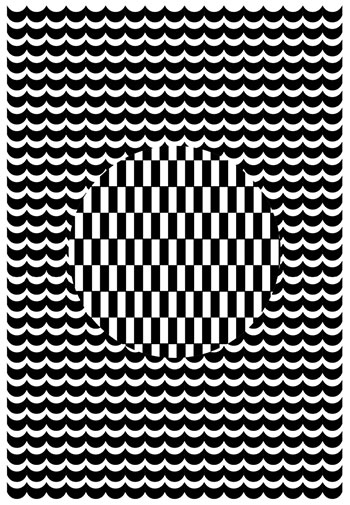
Figure 6.4.i
Source: Reshma Issac

Figure 6.4.j
Source: Reshma Issac
To understand more about how these explorations work and the illusion, please look at the link below:
• Ouchi Illusion......

